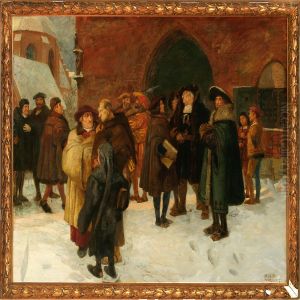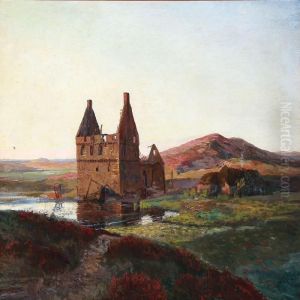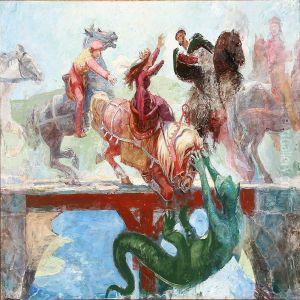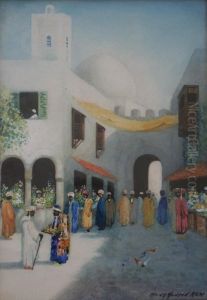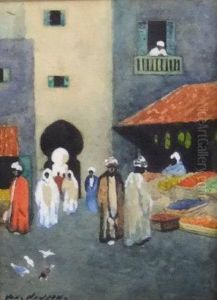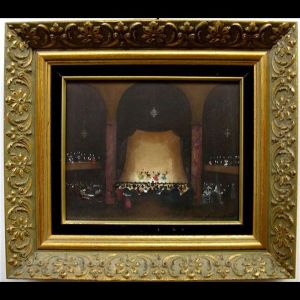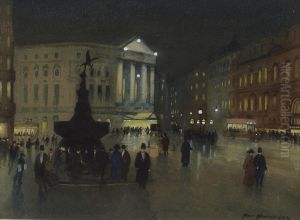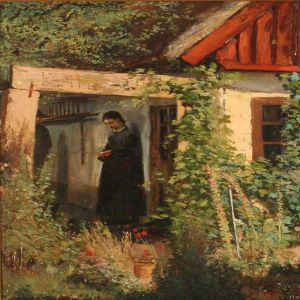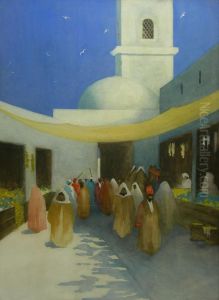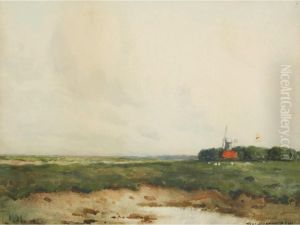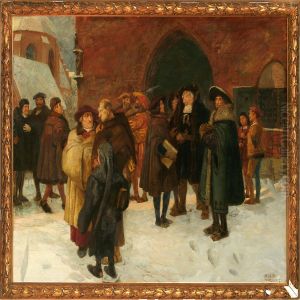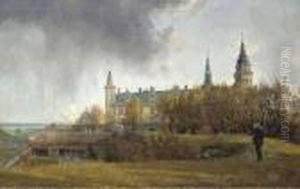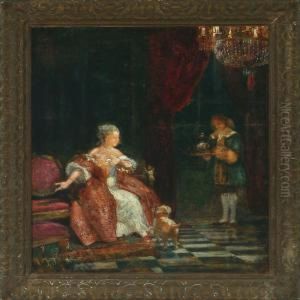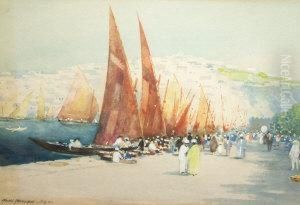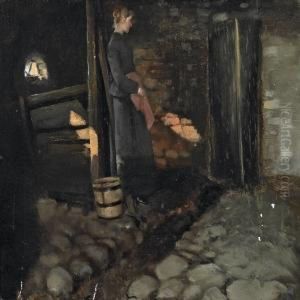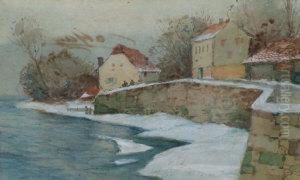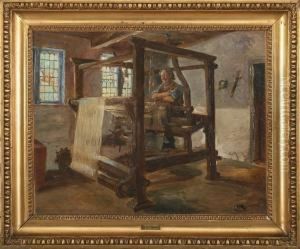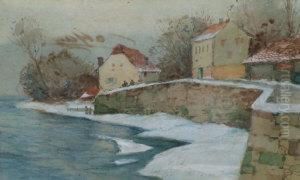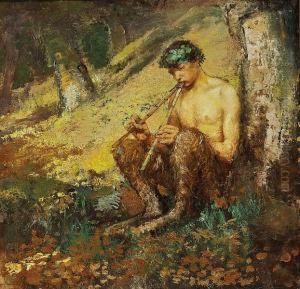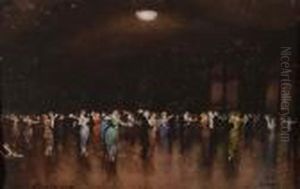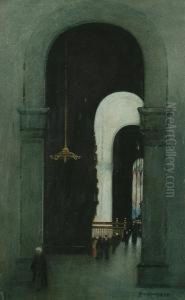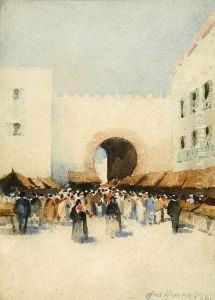Hans Nicolaj Hansen Paintings
Hans Nicolaj Hansen was a Danish painter born on December 29, 1853, in Nibe, Denmark. He is best known for his landscape and genre paintings, capturing the rural life of Denmark and the surrounding regions with a particular focus on the effects of light and atmosphere.
Hansen received his artistic training at the Royal Danish Academy of Fine Arts in Copenhagen, where he studied from 1872 to 1877. He was a student of the prominent Danish artists Peder Severin Krøyer and Frederik Vermehren, both of whom were influential figures in the Danish art scene of the time.
After completing his education, Hansen traveled extensively throughout Europe, which was a common practice for artists of his era seeking to gain exposure to different artistic styles and cultures. His travels took him to Italy, where he was particularly inspired by the vibrant Italian landscapes and the quality of light. He also spent time in France and was influenced by the French plein air painters and the Impressionist movement, which can be seen in his use of color and brushwork.
Upon returning to Denmark, Hansen became a part of the Danish artistic community and began exhibiting his works at the Charlottenborg Spring Exhibition, a prestigious annual art event in Copenhagen. His paintings often featured scenes from the Danish countryside, coastal areas, and daily life, characterized by a naturalistic style with a keen attention to detail and the changing seasons.
Over the years, Hansen's work gained recognition, and he was awarded several honors and medals for his contributions to Danish art. His works were acquired by various art museums, including the National Gallery of Denmark, which helped cement his legacy as an important figure in Danish landscape and genre painting.
Hansen continued to paint and exhibit his works until his death on February 10, 1923, in Copenhagen. His paintings remain celebrated for their serene beauty and their ability to capture the essence of the Danish landscape and its people. Hans Nicolaj Hansen left behind a body of work that continues to be admired for its artistic quality and historical value, providing insight into the life and environment of Denmark in the late 19th and early 20th centuries.
